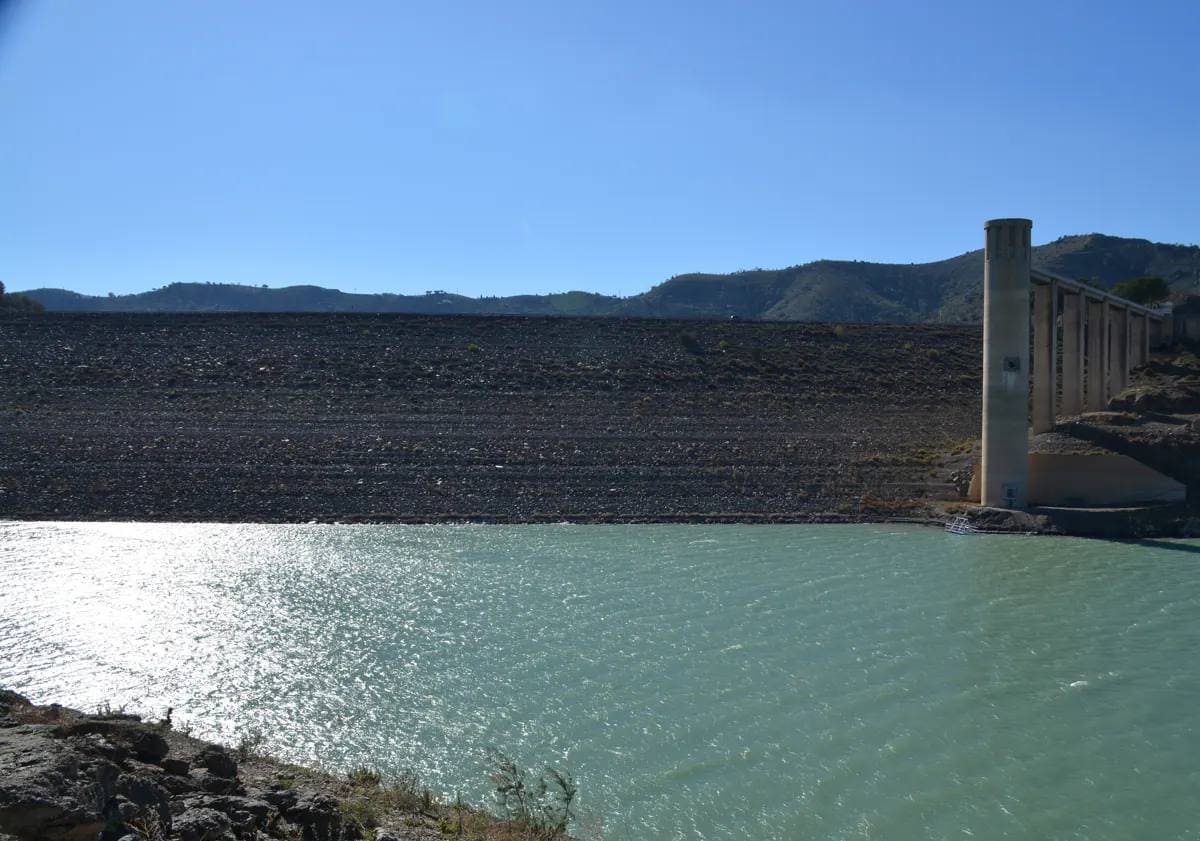

Sections
Highlight

Eugenio Cabezas
Axarquía
Wednesday, 22 November 2023, 19:39
The much-needed rain has failed to arrive in the Axarquía area of Malaga province and this once flourishing agricultural area, which is home to subtropical fruit plantations as well as traditional Mediterranean crops such as grapes and olives is experiencing regular water cuts and millions of euros in losses due to poor harvests. Growers have been unable to access water from La Viñuela, the reservoir that supplies the area for over a year.
At least eight towns and villages in the Axarquía have been living with nighttime cuts to the water supply since July (Vélez-Málaga, Iznate, Benamargosa, El Borge, Almáchar, Moclinejo, Periana, Sedella and Colmenar).
Now the Andalusian regional government has taken unprecedented steps in an effort to extract as much of the remaining 7.6 per cent of water from La Viñuela reservoir. The Junta de Andalucía, which is exclusively responsible for water issues in the Andalusian Mediterranean Basin, continues to try to implement emergency measures, having already issued three drought decrees in three years.
Work is being undertaken to install surface pumps in the reservoir, which are being connected to the supply intake, in an attempt to ensure that the water sent to the El Trapiche (Vélez-Málaga) drinking water treatment plant is of the highest possible quality. As the reservoir’s water levels fall, what remains is largely silt and organic matter, rather than water fit for consumption.
The flow of water from the dam has been reduced to just 50 litres per second and for the time being, it is still possible to make it drinkable. However, prior to treatment, occasional excesses of pesticide content as well as of glyphosate and its metabolite AMPA have been detected.



The water level of the dam is just two metres above the reservoir intake limit for water supply: it is currently at 183 metres above sea level while the intake limit is at 181 metres, as SUR has learnt. With the surface pumps, it will be possible in a few days to send water from the surface to the intake and, from there, to the pipe that connects to the El Trapiche water treatment plant.
A similar installation has been in use since last spring in two reservoirs in the northern part of Córdoba province: La Colada and Sierra Boyera, to supply some 80,000 inhabitants, although the water extracted is not drinkable.
The Junta de Andalucía is also looking into an operation to remove the thousands of fish and turtles in the reservoir. However, for the moment, no increased mortality of these species has been observed. The specimens, which include carp, black-bass, eels and turtles, are taking refuge in an area of the reservoir which still has a depth of around 30 metres, SUR has learned.
The budget for the work, which began last July, is more than 700,000 euros and is included in the third drought decree approved by the Andalusian regional government at the end of April this year.
Publicidad
Publicidad
Publicidad
Publicidad
Esta funcionalidad es exclusiva para registrados.
Reporta un error en esta noticia

Debido a un error no hemos podido dar de alta tu suscripción.
Por favor, ponte en contacto con Atención al Cliente.

¡Bienvenido a SURINENGLISH!

Tu suscripción con Google se ha realizado correctamente, pero ya tenías otra suscripción activa en SURINENGLISH.
Déjanos tus datos y nos pondremos en contacto contigo para analizar tu caso

¡Tu suscripción con Google se ha realizado correctamente!
La compra se ha asociado al siguiente email
Comentar es una ventaja exclusiva para registrados
¿Ya eres registrado?
Inicia sesiónNecesitas ser suscriptor para poder votar.